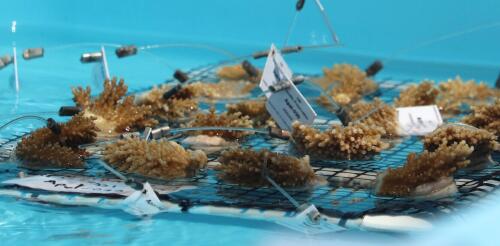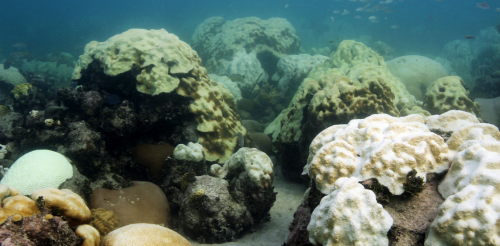Marine heatwaves
Armed with scrub brushes, young scuba divers took to the waters of Florida’s Alligator Reef in late July to try to help corals struggling to survive 2023’s extraordinary marine heat wave. They carefully scraped away harmful algae and predators impinging on staghorn fragments, under the supervision and training of interns from Islamorada Conservation and Restoration Education, or I.CARE. Normally, I.CARE’s volunteer divers would be transplanting corals to waters off the Florida Keys this time of year, as part of a national effort to restore the Florida Reef. But this year, everything is going in reverse. As water temperatures spiked in the Florida Keys, scientists from universities, coral reef restoration groups and government agencies launched a heroic effort to save the corals. Divers have been in the water every day, collecting thousands of corals from ocean nurseries along the Florida Keys reef tract and moving them to cooler water and into giant tanks on la...
The water off South Florida is over 90 degrees Fahrenheit (32 Celsius) in mid-July, and scientists are already seeing signs of coral bleaching off Central and South America. Particularly concerning is how early in the summer we are seeing these high ocean temperatures. If the extreme heat persists, it could have dire consequences for coral reefs. Just like humans, corals can handle some degree of stress, but the longer it lasts, the more harm it can do. Corals can’t move to cooler areas when water temperatures rise to dangerous levels. They are stuck in it. For those that are particularly sensitive to temperature stress, that can be devastating. A transplanted coral in the Port of Miami that was healthy in early 2023 had bleached in the warm water by July 11, 2023. NOAA/University of Miami I lead the Coral Program at the National Oceanic and Atmospheric Administration’s Atlantic Oceanogra...
It’s coming. Winds are weakening along the equatorial Pacific Ocean. Heat is building beneath the ocean surface. By July, most forecast models agree that the climate system’s biggest player – El Niño – will return for the first time in nearly four years. El Niño is one side of the climatic coin called the El Niño-Southern Oscillation, or ENSO. It’s the heads to La Niña’s tails. During El Niño, a swath of ocean stretching 6,000 miles (about 10,000 kilometers) westward off the coast of Ecuador warms for months on end, typically by 2 to 4 degrees Fahrenheit (about 1 to 2 degrees Celsius). A few degrees may not seem like much, but in that part of the world, it’s more than enough to completely reorganize wind, rainfall and temperature patterns all over the planet. Marine heat waves can trigger coral bleaching. Alexis Rosenfeld/Getty Images...


